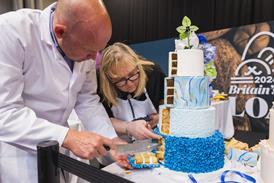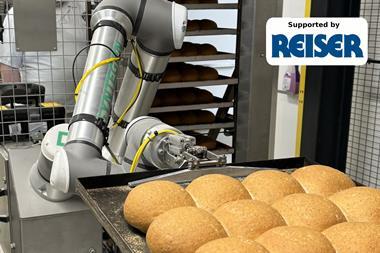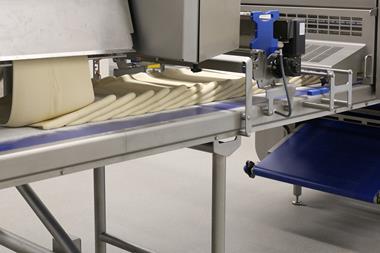An oven’s importance in the bakery cannot be overstated, but knowing which one is just right for your business takes research and forethought
The oven is arguably the most important piece of kit in a bakery. It’s where the magic happens – the dough rises, the crusts crisp and the flavours come together.
Ovens vary greatly, of course, and what works for one baker might not work so well for another. Put simply, ovens split into three main categories: rack, deck and convection.
- The rack is a rotary oven that is ideal for when larger quantities of the same product are being baked.
- A deck oven usually uses a stone sole and has an easily regulated top and bottom heat distribution control. Deck ovens are primarily used for traditional oven-bottom bread, morning goods and, quite often, Continental breads.
- A convection oven, often referred to as a bake-off oven, is a fan-assisted oven, ideal for when preparing smaller quantities of confectionery and also when ‘baking off’ products in-store.
“Depending on the quantities being made, a larger-scale facility producing quantities of biscuits, cakes etc would benefit from a rack oven,” says Ann Wells, group marketing director at Brook Food Processing Equipment. “But bakers looking to produce artisan loaves and a more traditional product would benefit from a deck oven.”
For a small business, Wells reckons you can’t beat a deck oven for quality and versatility. “You get the benefit of the stone soles and the evenly distributed heat guaranteeing a great-quality bake on all products. Some deck ovens also have the facility to allow extra decks to be added as the business grows,” she explains.
Mono Equipment recommends small businesses use a Harmony deck oven and a rack oven. The company says the deck oven is perfect for artisan products and, as each deck is separately controlled, users can save energy by only heating the decks they are using.
Meanwhile, the Harmony rack oven is designed for continuous baking, with no waiting time between bakes thanks to a quick recovery time and a fully-integrated steam system.
Kieron Roberts, of Roberts Country Fayre in Wrexham, has just had a Mono pass-through rack oven installed. “I chose Mono because they supply good equipment. I watched them build it here and the build quality of the oven is phenomenal.”
He chose this model in part due to the through door, so there could be total separation between high-risk and low-risk goods and also because it has a gas burner in the roof.
%%Quote_18%%
While energy efficiency and the intended use of an oven are key considerations when choosing the best equipment for your business, Wells at Brook Food says another important factor is access to your building: “You need to consider whether the oven can be installed in one piece or whether it will need to go in in sections and be built on-site. Another equally important factor is the electrical supply required for the oven when it is up and running. And one final consideration is where the oven is located. If it is going to be on view to customers, then an aesthetically pleasing oven is key.”
Wells says a second-hand oven can be perfect for bakers when price and affordability are an issue.
“The most important thing to consider when buying second-hand is that there is a warranty,” she advises.
Making the right choice
Research is key when it comes to investing in a new oven – whether that’s visiting exhibitions, talking to suppliers or asking other bakers for their opinions.
For Lewis Freeman from Dunn’s Bakery in Crouch End, it was a mix of all three. “We needed an oven that would give us a solid bake and produce a loaf with an egg-shell crust. It had to be fully programmable and give a consistent bake day-in day-out,” he explains.
He visited bakery exhibitions in Germany and France, where he was impressed with what he describes as the “excellent build quality” of the German–made MIWE ovens and their reputation for gentle baking. He spoke to other craft bakers in the south east and also to supplier EPP.
Wanting a deck oven that had all the features of a rack oven but took up less space, the solution for Freeman was the MIWE condo deck oven, supplied and supported by EPP.
Meanwhile, for Ben Glazer, from the recently opened bakery on Coombeshead Farm in Cornwall, it was crucial to choose the right oven. “I knew the kind of bread I wanted to bake – sourdough loaves, relatively high hydration, using British, stone-ground flour,” he says. “And I wanted to be able to bake hot and dark, loading the bread in a hot oven with plenty of steam for the minimal amount of time to get the full, dark caramelisation I always strive for.”
After extensive research, and conversations with the team at Brook Food, a Polin four-deck,
12-tray modular electric deck oven became the clear choice, and Glazer (pictured above) is delighted with the results.
“The oven generates plenty of steam, producing a glistening, crackling crust. The heat is high, but also somehow quite gentle, avoiding the hot spots that are all too common in bread ovens. It also looks great .
“I’ve learned that a good oven is one you don’t have to worry about – that you don’t have to compensate for, or work around.”
Creating an atmosphere
Variations in air pressure can have an impact on the baking process.
Steve Merritt, managing director at EPP, says unpredictable weather and varying air pressure mean there can be a big difference between pressure in the baking chamber and the bakery itself.
To mitigate this, MIWE has added an ‘atmospheric baking’ system to its Roll-in e+ oven. This works autonomously without manual correction and intervenes after the first few minutes to ensure the pressure is the same in the baking chamber as it is in the bakery.
So, regardless of air pressure, the baking results remain consistent, says Merritt, with many items even developing better volume, a fine crumbly crust and crispiness, and less moisture loss on the surface.














































No comments yet